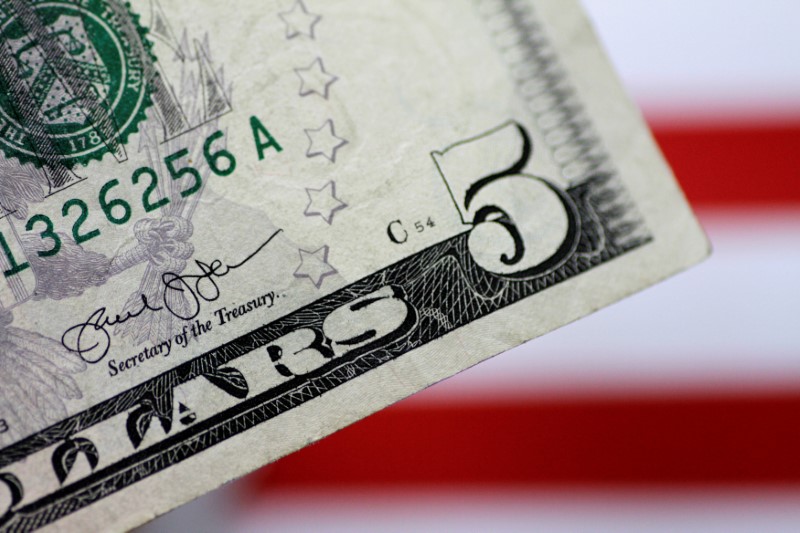Buy tech sell-off, Wedbush’s Ives says: ’this is a 1996 moment, not 1999’
Investing.com - The U.S. dollar fell Monday, remaining close to multi-year lows and weighed by optimism over trade deals as well as growing expectations of the Federal reserve cutting interest rates in the near future.
At 04:10 ET (08:10 GMT), the Dollar Index, which tracks the greenback against a basket of six other currencies, dropped 0.2% to 96.810, close to its lowest level since March 2022, on track for a hefty 2.6% decline in June.
Trading calm could help Fed ease
Optimism is growing that the volatile trade policies of the Trump administration may be coming to an end, after the White House announced a deal with China last week and Canada scrapped a digital services tax to restart stalled talks.
Additionally, Bloomberg reported late last week that European Commission President Ursula von der Leyen told EU leaders during a closed-door summit that she believes a deal can be secured with the U.S. before the July 9 deadline, when significant tariffs are set to take effect on both sides.
The removal of the threat of potentially inflationary tariffs could be the final catalyst the U.S. Federal Reserve needs to cut interest rates once more, weighing on the dollar.
Fed Chair Jerome Powell’s testimony to U.S. Congress last week was seen as somewhat dovish after he said rate cuts were likely if inflation did not spike this summer because of tariffs.
Bets for at least one quarter-point reduction by September have risen to 91.5%, CME Group’s FedWatch Tool shows, from about 83% a week earlier.
The Fed’s rate-setting committee meets next in July, but does not gather in August.
Investors are also keeping an eye on Trump’s massive tax-cut and spending bill now facing the Senate, which could add $3.3 trillion to the national debt over a decade, the Congressional Budget Office has estimated.
German retail sales fall sharply
In Europe, EUR/USD gained 0.1% to 1.1730, just off Friday’s level of 1.1754, its highest since September 2021 as the euro benefited from the dollar weakness.
On the euro side, domestic factors are having a more limited impact on the single currency’s ascent.
German retail sales unexpectedly fell by 1.6% in May compared with the previous month, dampening hopes for strong growth in the second quarter for Europe’s largest economy.
Additionally, German and Italian inflation data are likely to point to a modest acceleration in the overall eurozone headline CPI release later in the week.
“With markets currently pricing the first cut from the European Central Bank in December, we see risks tilted toward a dovish repricing from here,” said analysts at ING, in a note.
GBP/USD dropped 0.1% to 1.3705, just below Thursday’s peak of 1.3770, unseen since October 2021.
Britain’s economy grew at its fastest pace in a year in the first three months of 2025, as output grew by 0.7%, confirming a preliminary estimate and the fastest quarterly pace since the first three months of 2024.
However, this rate of growth is not expected to continue as the year progresses, with the Bank of England having said it expects economic growth of about 0.25% in the second quarter of this year.
Yuan helped by PMI data
In Asia, USD/JPY traded 0.4% lower to 144.07, even as data showed Japan’s industrial production grew much slower than expected in May.
USD/CNY slipped 0.1% to 7.1654, with the Chinese currency close to its strongest level since November.
Purchasing managers index data showed China’s manufacturing sector shrank at a slightly smaller rate in June than expected, while non-manufacturing activity picked up from the prior month.
The reading reflected some improvement in Chinese business activity, with the manufacturing sector seeing a recovery in overseas orders after the U.S. and China agreed to slash their respective trade tariffs in May.
But China’s manufacturing sector still shrank for a third consecutive month, indicating that local manufacturers still remained under pressure from relatively high U.S. tariffs. Local demand also remained languid.
